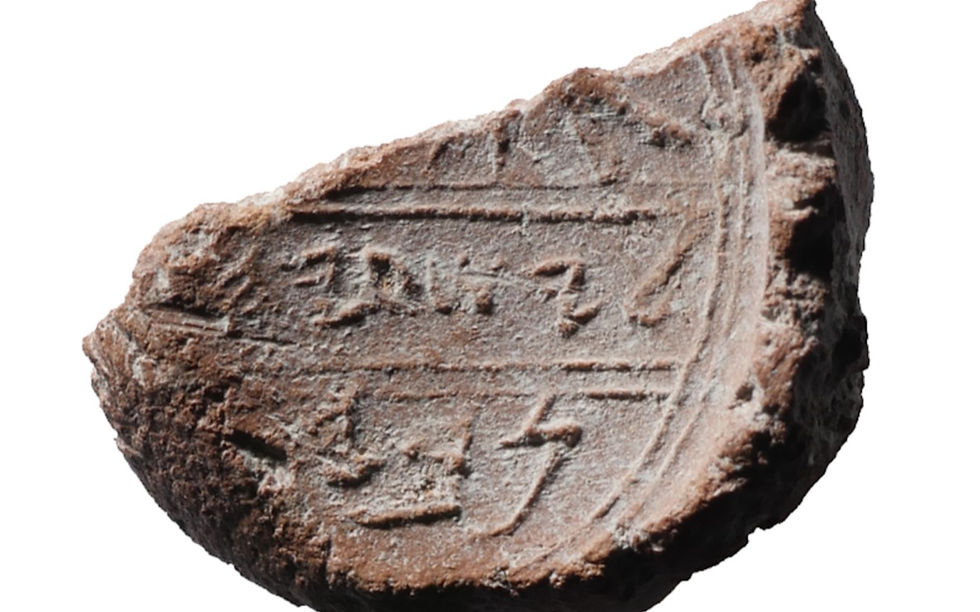Hoard of Rare Bronze Coins from ‘Great Revolt’ Unearthed in Jerusalem
- Ken Ecott
- Apr 12, 2018
- 3 min read

A cache of rare coins from the period of the Jews’ Great Revolt against the Romans has been discovered at the Ophel archaeological site near the Temple Mount in Jerusalem, Israel.
123 A hoard of rare bronze Jewish Revolt coins has been discovered at the recently renewed Ophel excavations. The trove of dozens of bronze coins minted during the last years of the ill-fated four-year rebellion of the Jews against Roman rule was uncovered in a cave just south of the Temple Mount by Hebrew University archaeologist Dr. Eilat Mazar.
123 A hoard of rare bronze Jewish Revolt coins has been discovered at the recently renewed Ophel excavations. The trove of dozens of bronze coins minted during the last years of the ill-fated four-year rebellion of the Jews against Roman rule was uncovered in a cave just south of the Temple Mount by Hebrew University archaeologist Dr. Eilat Mazar. The Ophel excavations, located below the Temple Mount’s southern wall, were relaunched in early 2018 after a four-year hiatus. They garnered international headlines after the publication of the recent “Prophet Isaiah” seal impression, which was discovered in the lead-up to the current dig season.
The 1.5-cm (0.6 inch) bronze coins are well preserved, probably because they were in use for a short time.
“The coins were left behind by Jewish residents who hid in a large cave for four years (66-70 CE) — from the Roman siege of Jerusalem, up until the destruction of the Second Temple and the city of Jerusalem,” explained Hebrew University archaeologist Dr. Eilat Mazar.
“While several of the coins date to the early years of the revolt, the great majority are from its final year, otherwise known as, ‘Year Four’ (69-70 CE).”

Isaiah bulla, a 2,700-year-old clay seal impression which may have belonged to the biblical prophet Isaiah. (Ouria Tadmor/© Eilat Mazar)
“Significantly, during the final year, the Hebrew inscription on the coins was changed from ‘For the Freedom of Zion’ to ‘For the Redemption of Zion,’ a shift which reflects the changing mood of the rebels during this period of horror and famine.”
In addition to Hebrew inscriptions, the coins were decorated with Jewish symbols, such as the four Biblical plant species: palm, myrtle, citron and willow, and a picture of the goblet that was used in the Temple service.
Many broken pottery vessels, including jars and cooking pots, were also found at the site.
“These finds all date back to the time of the rebellion and were found in Ophel Cave directly above a Hasmonean period layer that was situated at the base of the cave,” Dr. Mazar said.

“It is remarkable that this cave was never discovered by subsequent residents of Jerusalem nor used again after the Second Temple period,” he added.
“In this way the cave acts as a veritable time capsule of life in Jerusalem under the siege and during the four-year revolt against the Roman Empire.”
The Ophel bronze coin find is remarkable in that until today, most of the Jewish Revolt coin finds have dated to Year Two, when the Romans made great strides against the Jewish rebels. In fact, “the small amount of coins minted in the third year, and almost a complete lack of coins from the fourth year, indicates that most of the country was re-conquered by the Roman army fairly soon after the beginning of the revolt,” writes Robert Deutsch in his 2017 “The Coinage of the First Jewish Revolt against Rome, 66-73 C.E.”








Comments